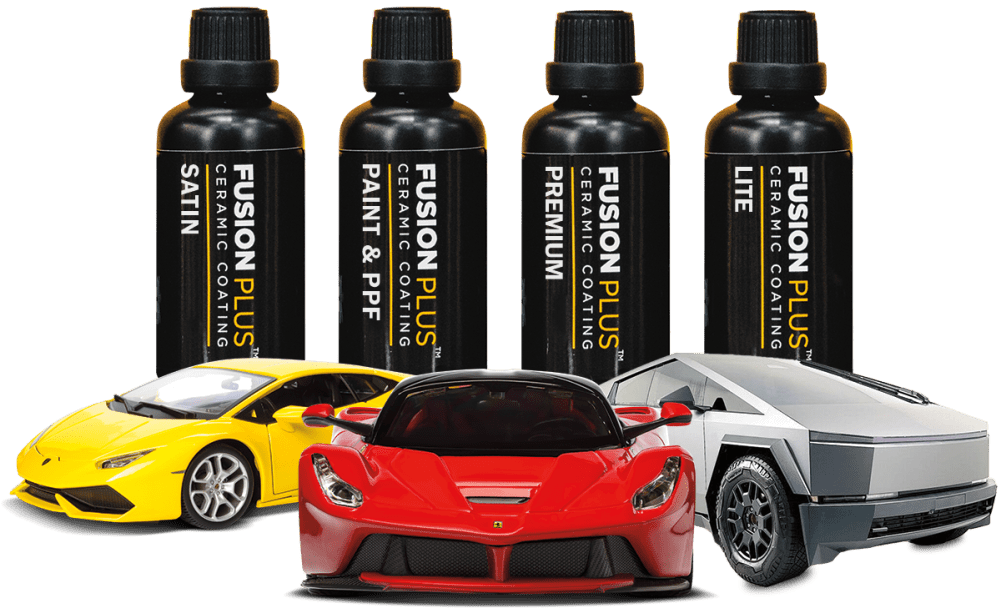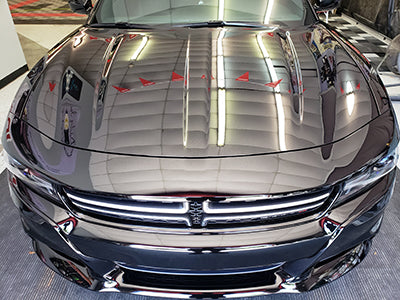Protect Your Car from the Elements with Ceramic Coating Technology
Protect Your Car from the Elements with Ceramic Coating Technology
Blog Article
Ceramic Covering vs. Conventional Wax: Which Gives Better Long-Term Protection?
The argument between ceramic layers and traditional wax for vehicle protection has gathered significant interest among automobile lovers and experts alike. While both satisfy of protecting paint, their differences in sturdiness, application, and long-lasting maintenance costs may affect a customer's selection. Ceramic layers boast premium long life and resistance to ecological aspects, yet the complexity of their application raises questions about ease of access and functionality. As we explore these contrasting options, it comes to be essential to take into consideration not just the instant benefits yet additionally the ramifications for car treatment gradually.
Overview of Ceramic Covering
Ceramic finishing has actually acquired substantial popularity amongst automobile fanatics and detailers alike because of its innovative protective top qualities. This innovative modern technology is developed to develop a durable, hydrophobic guard over a vehicle's paint surface area, significantly improving its resistance to ecological contaminants such as dust, UV rays, and chemical stains. Unlike standard wax, which provides a momentary layer of defense, ceramic finishings bond at a molecular degree with the paint, offering resilient durability-- typically expanding beyond two years with appropriate upkeep.
The application procedure involves precise prep work of the lorry's surface, including cleaning and brightening to guarantee optimum attachment. Once applied, the finish cures to form a robust layer that not only adds deepness and gloss to the paint however additionally streamlines upkeep. With its hydrophobic residential properties, ceramic layer permits water and dust to glide off even more conveniently, reducing the frequency of washes and reducing the danger of swirl marks.
Furthermore, ceramic coatings are readily available in numerous solutions, permitting customers to choose items tailored to their specific needs and choices. On the whole, ceramic layer stands for a substantial improvement in paint security innovation, providing exceptional performance contrasted to standard choices.
Summary of Traditional Wax
Traditionally regarded as a staple in auto treatment, wax acts as a popular selection for those seeking a straightforward approach to improve and safeguard their vehicle's paint - ceramic coating. Automotive wax typically consists of natural ingredients, such as carnauba, or artificial compounds, designed to develop a safety layer on the surface area of the paint. This layer not just improves the lorry's gloss and shine but additionally offers a barrier versus ecological pollutants
The application of wax is usually easy to use, making it available for both specialists and DIY enthusiasts. It can be used by hand or maker, permitting convenience in the describing procedure. When used, wax needs a treating duration, after which it sets to develop a safety covering. Wax is likewise known for its ability to drive away water, promoting a beading effect that helps in the prevention of water areas and deterioration.
Nonetheless, while wax is reliable for enhancing the aesthetic charm of an automobile, it is necessary to keep in mind that the protection it provides might demand more frequent reapplication compared to alternate items, such as ceramic coatings. Overall, conventional wax remains a preferred alternative for those focusing on convenience of use and immediate visual enhancement.
Longevity and Longevity Comparison
While both ceramic coverings and standard wax deal safety advantages for vehicle paint, view it their longevity and longevity differ considerably. Conventional wax, usually made from natural carnauba or synthetic polymers, typically offers a protective layer that lasts approximately three to 6 months. This reasonably short lifespan demands normal reapplication to keep ideal security.
In contrast, ceramic coverings are engineered from advanced nanotechnology, creating a covalent bond with the paint surface area. This leads to a robust, hydrophobic layer that can withstand for two to five years, depending on the item and ecological conditions. The remarkable longevity of ceramic coverings is credited to their chemical framework, which provides boosted resistance to scratches, UV rays, and oxidation.

Defense Against Ecological Elements
Shielding a vehicle's paint from ecological variables is important for maintaining its look and value in time. Vehicles are regularly revealed to a range of elements, including UV rays, bird droppings, tree sap, acid rainfall, and roadway gunk, all of which can compromise the honesty of the paintwork.
Ceramic finishes offer a robust defense against these environmental aggressors. Unlike typical wax, which can break down quickly under UV exposure, ceramic finishes create a durable, hydrophobic layer that stands up to the damaging results of sunshine and environmental toxins. This advanced modern technology develops a chemical bond with the car's surface, offering superior protection that linked here lasts for many years, even in extreme problems.
In contrast, ceramic finishes keep their safety high qualities longer, significantly minimizing the danger of paint damages and guaranteeing that the automobile maintains its aesthetic allure. As an outcome, ceramic layers are significantly recognized as the exceptional selection for long-lasting protection versus ecological factors.
Application and Upkeep Differences
The approaches of application and succeeding upkeep for ceramic coatings and traditional wax vary considerably, impacting the overall user experience and performance of each item. Ceramic coverings need an even more elaborate application procedure, usually involving surface prep work that consists of washing, decontaminating, and brightening the car. When the surface is prepared, the ceramic coating is applied in a regulated environment, commonly requiring professional experience to guarantee appropriate healing and bonding to the paint.

While both items boost vehicle appearance, the longer-lasting security provided by ceramic finishes might warrant their initial investment, in spite of the even more requiring application procedure. Alternatively, traditional wax remains a popular choice for those seeking an easier, albeit temporary, option.

Conclusion
Finally, ceramic coatings demonstrate considerable advantages over typical wax in regards to sturdiness and environmental management. With a life-span extending two to five years and superior resistance to UV rays, dust, and chemical discolorations, ceramic coatings offer a more reliable remedy for lasting automobile upkeep. The application procedure may require professional expertise, the resulting price financial savings and decreased frequency of reapplication emphasize the value of ceramic coverings for those looking for ideal car defense.
The dispute between ceramic coatings and typical wax for automobile protection has actually gathered significant interest among auto lovers and professionals alike. Unlike conventional wax, which gives a momentary layer of protection, ceramic layers bond at a molecular level with the paint, supplying resilient resilience-- usually prolonging past two years with correct maintenance.
While both ceramic finishes and traditional wax deal protective benefits for auto paint, their sturdiness and long life differ dramatically. For vehicle fanatics seeking long-lasting defense, ceramic layers provide a compelling benefit over traditional wax products.
In final thought, ceramic coatings demonstrate substantial benefits over conventional wax in terms of longevity and environmental protection.
Report this page